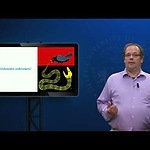The above quote shows that it is impossible to predict the future. You can probably think of quite some examples yourself! We are dealing here with what are called 'unknown unknowns'. These unknowns have many implications for responsible innovation. For example, how can we deal with risks that we do not even know about? This is the focus of the next web lecture by Prof. Ibo van de Poel. He will discuss the following points.
- The 'Collingridge dilemma' which states that in the early phases of technological development, technology can still be changed, but the effects of technology are hard to predict. In the later phases, we see the opposite. The effects are clear but technology has become so embedded in society that it is hard to change.
Or as Collingridge himself so eloquently put it: "When change is easy, the need for it cannot be foreseen; when the need for change is apparent, change has become expensive, difficult and time consuming." - Anticipating the future using the Risks approach and the Precautionary Principle.
(see also the previous web lecture). - The need for an experimental approach to deal with uncertainty.
- A case-study on how titanium dioxide nanoparticles used in sunscreens had the unexpected side-effect of causing cancer.
